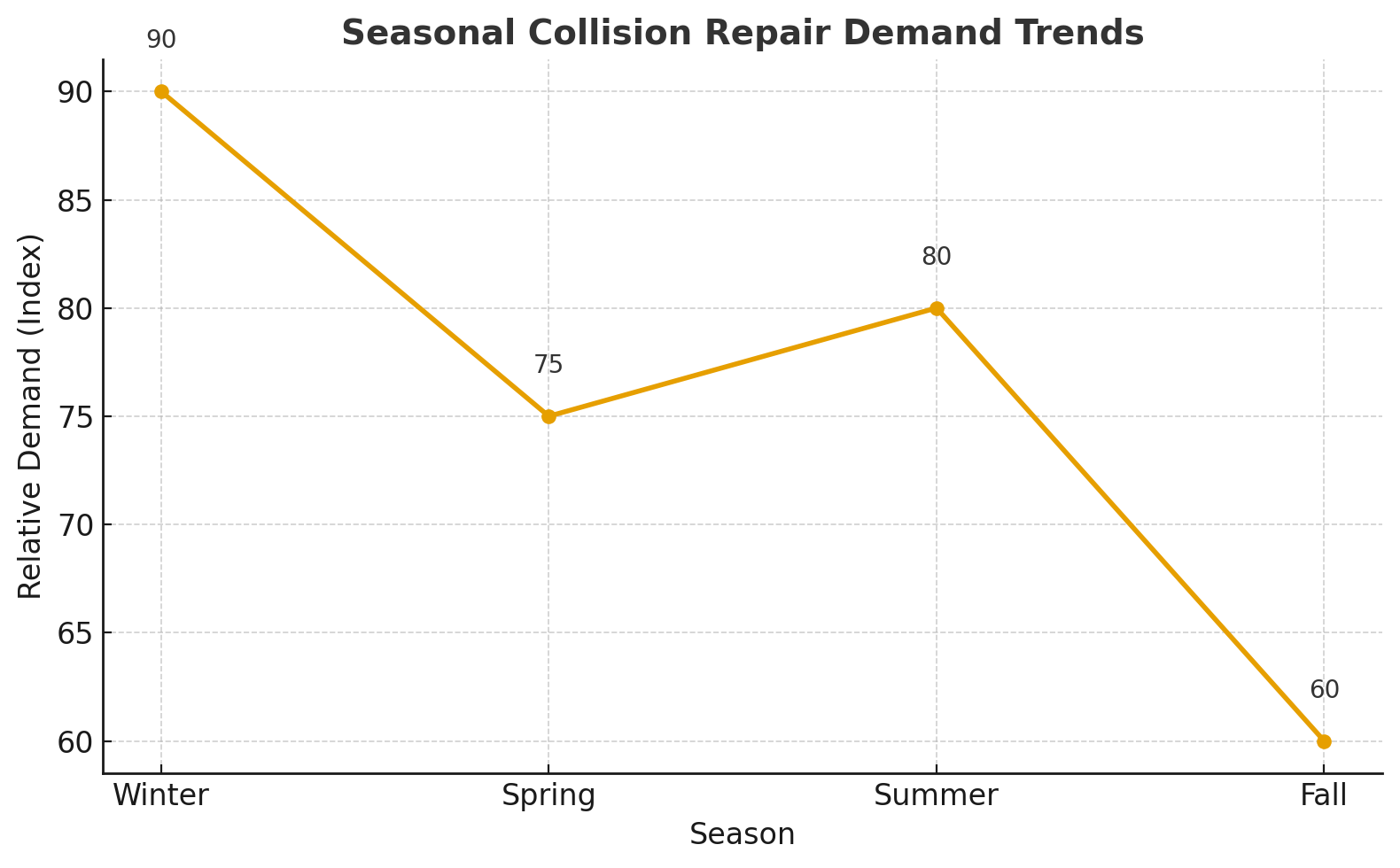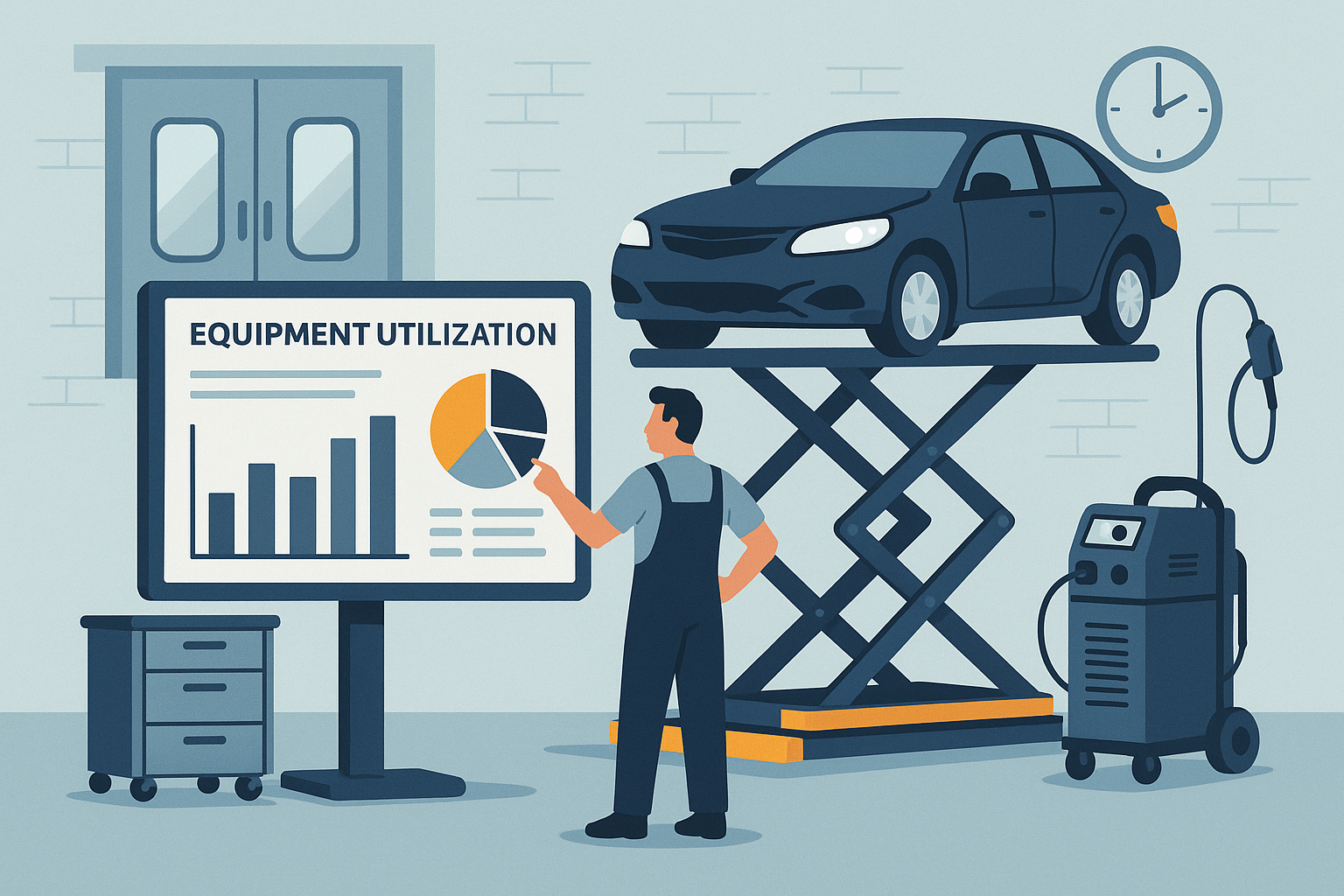Seasonal Scheduling Strategies: Managing Peaks and Valleys in Collision Repair
-
Written by David McCreight
-
Published on September 04, 2025
-
Category: Productivity and Efficiency, Production
The first snowstorm hits, and suddenly your shop is overflowing with cars. A month later, it’s crickets. For collision repair centers, this cycle is all too familiar. Volume fluctuates constantly with weather patterns, travel trends, and seasonal driving risks. Without a plan, those peaks can overwhelm staff while valleys leave bays empty.
The good news: with a clear scheduling strategy, you can reduce chaos, minimize strain on employees, and complete repairs on time—no matter the season.
Understanding Seasonal Demand Shifts
Before solving scheduling challenges, it’s essential to know what drives them. Collision volume is anything but steady:
- Winter – Snow, ice, and low visibility create spikes in claims.
- Spring – Hailstorms and storm damage combine with increased travel.
- Summer – Teen drivers, road trips, and holiday weekends boost fender-benders.
- Fall – Demand slows, but deer collisions and freeze/thaw cycles bring regional upticks.
Tracking and analyzing your shop’s repair volume by week or month provides a roadmap of when to expect business surges. Pairing this data with weather patterns or insurance trends makes forecasts even more accurate.

Scheduling Strategies for Peak Seasons
When your shop gets slammed, preparation is everything. These strategies can keep work flowing:
- Build “Overflow Work” Into Your Calendar
Reserve a percentage of daily slots for unexpected jobs, ensuring insurance referrals and walk-ins don’t derail the schedule. - Prioritize by Job Size and Complexity
Quick-turn repairs can be slotted tightly, while structural or multi-panel jobs need larger blocks. Fast-tracking one-day repairs clears bottlenecks. - Use Technology for Real-Time Adjustments
Shop management software can alert you to overloads and help reschedule on the fly. Advanced platforms even leverage AI to optimize workflows. - Create Flexible Work Shifts
Extending hours or adding weekend shifts during peak periods maximizes throughput. For balance, consider seasonal hires or outsourcing specific tasks to avoid technician burnout.
Strategies for Slow Periods
Downtime doesn’t have to mean lost revenue—it’s a chance to strengthen your shop:
- Training & Cross-Training
Use quiet weeks for OEM certification programs, skill-building, or cross-training across specialties. Investments here pay off during peak seasons. - Shop & Equipment Maintenance
Catch up on equipment servicing, facility updates, inventory audits, or software upgrades. - Advertising Preventive & Cosmetic Work
Offer specials on detailing, paint touch-ups, or seasonal safety checks to keep bays full and customers engaged. - Customer Relations
Reach out to past customers with seasonal tips, check in on long-term repairs, or send newsletters. Consistent communication builds loyalty year-round.
Forecasting and Planning Ahead
Successful shops don’t simply react—they prepare. By combining historical data, weather forecasts, and claim patterns, you can:
- Launch targeted marketing campaigns for hail, deer, or holiday travel seasons.
- Plan staffing schedules two to three months in advance.
- Develop contingency plans for “mild” vs. “severe” seasonal scenarios.
Clear forecasting not only improves workflow but also reassures employees that the chaos is under control.
Controlling the Chaos
Seasonal highs and lows aren’t just inevitable—they’re opportunities. By preparing for peaks and making smart use of valleys, your collision repair center can:
- Keep employees engaged.
- Improve efficiency.
- Deliver consistent customer satisfaction.
Don’t wait for the next storm or holiday rush to test your scheduling strategy. Review your past 12 months of volume data, identify your biggest seasonal pain points, and implement one change before the next busy season hits.
Plan for the chaos—and turn it into growth.
At Collision Resources, our scheduling software solutions are designed to streamline the scheduling process, helping collision repair centers to avoid some of these mistakes. Contact us today to learn more about how our scheduling software can help!
Subscribe to Our Newsletter
Interested in receiving more tips delivered directly to your inbox?

David McCreight is the Owner of Collision Resources and serves as President. Ultimately, David is categorically passionate about assisting auto body shop owners and managers to define and exceed their goals.


